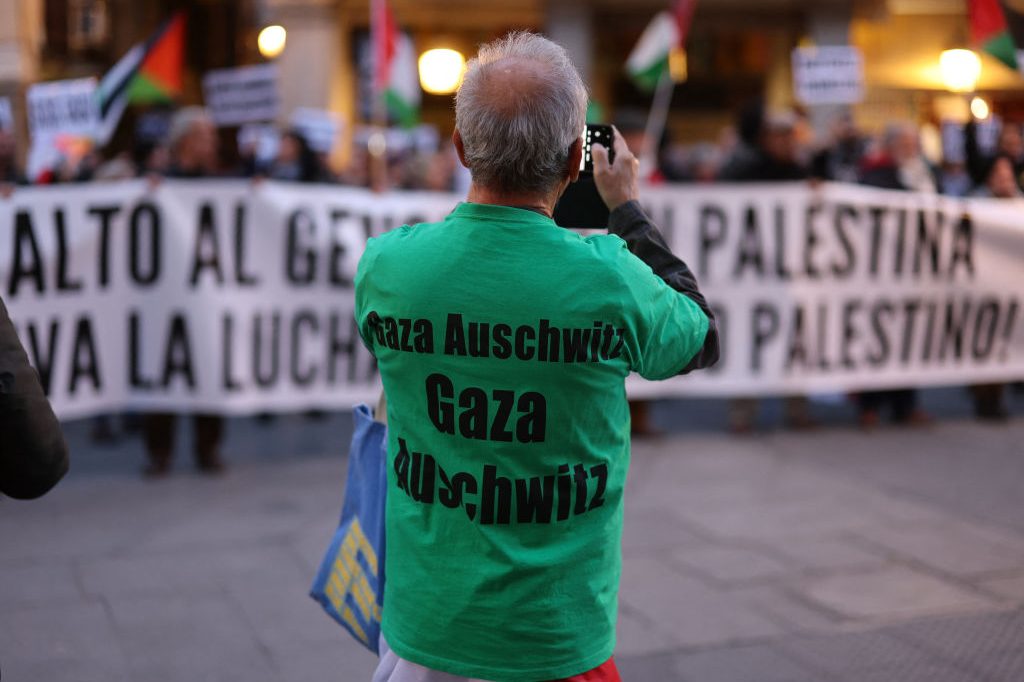Whatever else the arguments concerning the Gaza War, none is more wrong-headed than the suggestion that Gazans were living in such straitened circumstances that they had no choice but to “break out” on October 7. Palestinian solidarity protesters routinely describe Gaza as a “prison camp.” Even the British foreign secretary David Cameron has previously used that term to talk about Gaza. In the wake of the Hamas massacre, the UN chief António Guterres insisted that the events of October 7 “did not happen in a vacuum.” Although he later denied that this was a “justification” of the murders, rapes and kidnappings of Israelis by Gazans, Guterres’s comments tied in with a general view among Israel’s critics that conditions in Gaza were so dreadful that we can hardly be surprised at the inhabitants fighting back.
The exaggeration of the pre-war plight of Gazans is nothing new. Long before the current conflict broke out, progressives compared Gaza to the Warsaw Ghetto. The reality, of course, is that Gaza is nothing like the Warsaw Ghetto.
The exaggeration of the pre-war plight of Gazans is nothing new
Set aside the obvious point that Jews breaking out of the Warsaw Ghetto would not have made massacring any local gentiles they could get their hands on a priority. Set aside the fact that the people of Gaza had elected — in the only free election they have enjoyed — a party sworn to eternal warfare with Israel until the state was destroyed. Put aside the fact that Gaza shares a border with Egypt, through which goods could be delivered without any requirement for supplies from Israel — as was the case during the Egyptian occupation of Gaza between 1948 and 1967. Put aside further that the Gazans have had the resources to build an underground tunnel network that is said to be longer than the London Underground and to amass vast stocks of weapons and to fund the billionaire lifestyles of Hamas leaders. Ignoring all of this, just how dire were the circumstances in Gaza before October 7, circumstances which, according to Israel’s detractors, provide an understandable “context” for the actions of that day? A great deal can be understood by examining demography, so often the over-looked and underestimated explanation.
The sheer growth of Gaza’s population tells an eloquent story. In 1967, when Israel occupied the Strip, its population was slightly below 400,000. By the eve of the current conflict it had risen five-fold, an extraordinary increase in a few decades. The fertility rate in Gaza was high for most of that period: five or six children per woman until early in the current century. That is nothing unusual; it has been true of most societies historically until they reach a certain level of development. Really fast population growth occurs in that window when a society gets improved healthcare and rising access to food and other resources — but before urbanization and education tend to lead to falling birth rates. Births remain high, deaths tumble and so the population grows rapidly. This was Britain’s experience in the nineteenth century and it has been a trend seen throughout much of the world since.
Gaza’s golden opportunity came after the Israelis arrived in 1967, accelerating the flow of many benefits of modernity. In the mid-1960s, around one baby in ten died in the Palestinian Territories before he or she reached the age of one; by the late 2010s, this had fallen well over 80 percent to a level similar to other Arab countries such as Jordan and Egypt and equivalent to the level the UK reached in the early 1970s. At around seventy-five years, life expectancy in Gaza was, prior to the present conflict, better than experienced by several US states and only a couple of years short of the United States as a whole. Males in Glasgow live only a few months longer than males in Gaza. By 2020, the average Palestinian in the West Bank and Gaza was living a whole two decades longer than had been the case when the Israelis had conquered the Strip in 1967. Illiteracy has been more or less banished and the share of those going to university or other tertiary education has approached 50 percent; this is particularly impressive when you consider that, before 1967, neither the West Bank nor Gaza had a single fully-fledged university, nor ever had had. Better-educated people are invariably better able to keep themselves and their offspring alive, which accounts in large part for the rising life expectancy.
But so too does the general availability of food in Gaza which, despite the propagandistic claims of Hamas, was plentiful before it instigated the current war, even if food distribution was not always equitable. There were more than four overweight children in the Occupied Territories as a whole for each underweight one. There is no doubt that there was much poverty alongside the beach resorts, five-star hotels and luxury-car dealerships which graced the Gaza Strip prior to the present conflict, but that poverty had more to do with the welfare and redistributive policies of the Hamas regime that was in place rather than any absolute restrictions on the import of goods by Israel or indeed Egypt.
However the current conflict resolves itself, and one can only hope that it does so as speedily as possible, a permanent peace requires that the heady, gassy and destructive rhetoric of the past be refuted. Gaza before October 7, with its plentiful resources and long life expectancy, could not have been further from the depravity and depravation of the Warsaw Ghetto. Without Hamas’s determination to rocket Israel and row with Egypt, and without its diversion of resources in tunneling and armaments and corruption, conditions could have been much better still. The Palestinians in Gaza and elsewhere can find their way to an infinitely better future — but only when they and their friends set aside the hyperbolic fantasies which flies in the face of incontrovertible demographic reality.
This article was originally published on The Spectator’s UK website.


























Leave a Reply